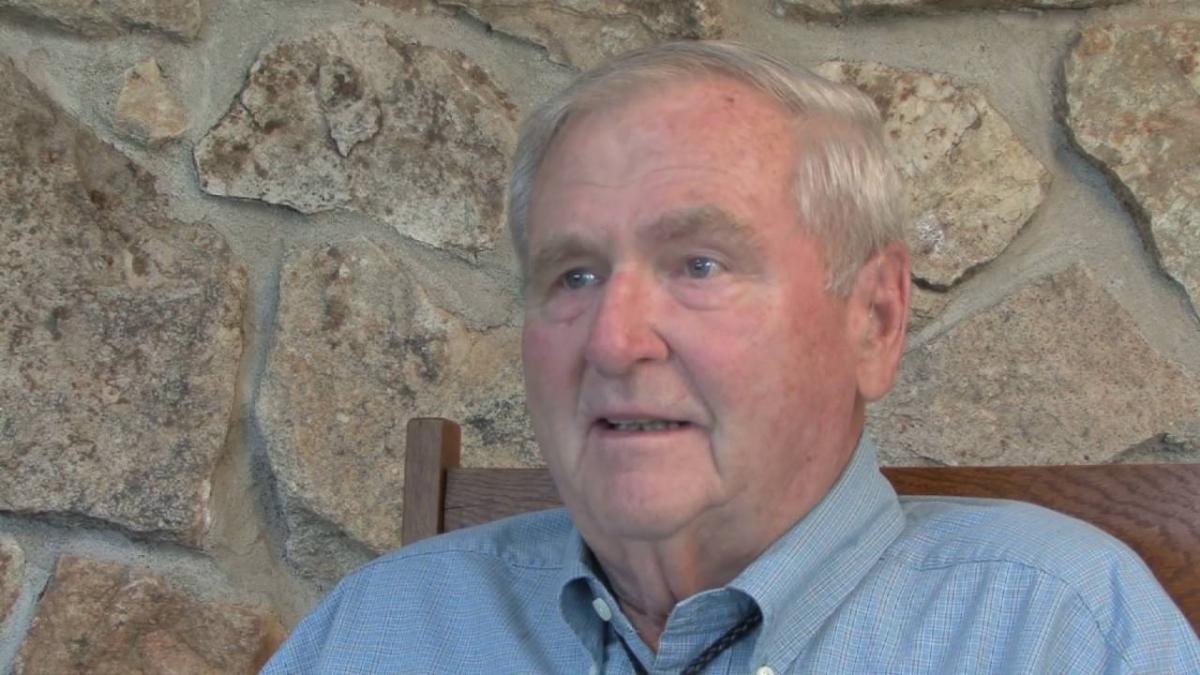Bob Barbee: A Great Leader of the World's First National Park
By: John A. Baden, Ph.D.Posted on October 13, 2016 FREE Insights
This FREE Insight is the first of a three part series honoring former Yellowstone National Park Superintendent Robert Barbee. FREE enjoyed preparing this e-publication by working with Dan Smith* of Oolite Media and Professor Jerry Johnson of Montana State University. Please go to yellowstonesuite.com for further publications.

Bob Barbee in a 2015 interview at the Baden ranch for the Wisdom of the Elders video series
The flags were at half-staff when we entered the Park at West Yellowstone on Sunday, October 9th. Ramona and I took that symbol as an honor to Bob Barbee, a great National Park superintendent who had retired to and died in Bozeman a week earlier. Bob was a friend who worked for the Park Service for some 42 years, eleven as Superintendent of Yellowstone. He died during the U. S. Park Service centennial.
Bob and his wife Carol had been guests at our home and Bob spoke at several FREE programs for federal judges, religious leaders, writers, and academics. He was also our leader when we toured the Park with these groups. There couldn't be a better person to explain complexities of Park management.
Here is the context of Barbee's accomplishments. Yellowstone was the world’s first national park and still the most well known. It became a model for managing the world's 1100 national parks, the wild lands of romance. UNESCO's World Heritage Report states “Yellowstone’s ecological communities provide unparalleled opportunities for conservation, study, and enjoyment of large-scale wildland ecosystem processes.”
The Progressive Era's "scientific management" was clearly a substantial improvement over non-managed commons and resource exploitation via political payoffs and graft. It was, however, a mechanical, bureaucratic approach to systems where time and place specific factors are critically important. In sum, scientific management was an engineering rather than an ecological approach.
Bob did a remarkable job in addressing three serious long-term problems baked into the "scientific management" paradigm of the U.S. Park Service. The three were; respecting the ecological values of natural fires, recovery of the Yellowstone grizzly, and the reintroduction of the grey wolf to the Greater Yellowstone Ecosystem. These problems became opportunities for exercising Bob's leadership, intelligence, courage, political sophistication, honesty and patience. He consistently and modestly always gave credit to his staff and colleagues. Whoever responsible, the net result was a huge move toward the sustainability of Yellowstone Park. How can this continue?
New problems have emerged and they could doom high expectations for Yellowstone and other parks and wildlands. Three impending challenges are federal entitlements crowding out discretionary spending, rapidly growing human population pressures on our parks, and disruption of park ecosystems by invasive or non-native species. Prevailing policies developed strong constituencies inside and outside the Park Service. These constituencies provide strong incentives to ignore, postpone, or pretend away these problems.
Here is my wish: Some creative individuals will be inspired by Bob's example. To succeed they must become institutional entrepreneurs, not just competent and politically sensitive and skillful bureaucrats.
Part II will discuss Bob's success and the conclusing essay introduces impending challenges and suggests ingredients for their resolution.
*Daniel J. Smith is a geologist, filmmaker, writer and musician who has lived in Bozeman, Montana for the past 40 years. He completed his Masters Degree in 1990 at Montana State University, studying the Buck Mountain Fault in the Teton Range. In 1991, Smith started Earthtalk Studios, Inc., one of the first web and multimedia development companies in Bozeman. Currently, he creates web and film experiences through his company, ooLite Media, LLC. He is the editor and publisher of two regional websites,thisisbozeman.com and thisisyellowstone.com.

